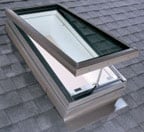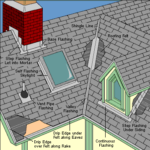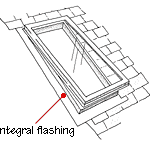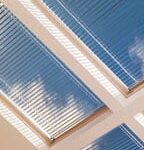Expert advice on how to buy a tubular skylight such as they type made by SolaTube, and Sun-Dome, and Velux— including help with sizing for ample light and notes on installation.
Buying a Tubular Skylight
About Installing a Tubular Skylight
Need to bring a little light into a dark hallway, landing, or closet? With tubular skylights (also called “solar tubes,” you can install a little bit of sunshine. Research has shown that the lights can provide the equivalent light output of up to one 700-watt incandescent bulb in December and one 1,200-watt bulb in June.
With this relatively inexpensive type of skylight, a roof-mounted light-collecting dome (in many cases, with a prism-like lens) collects natural light and delivers it to the room below through a tubular shaft that has a highly reflective interior coating. Because of their highly refractive and reflective components, tubular skylights operate better than traditional skylights to deliver usable light.
The rooftop assembly directs sunlight into a metal or plastic tube which guides the sunlight to a diffuser lens, mounted on the interior ceiling surface. This spreads light evenly. Because of the shape of the “scoop” at the top, tubular skylights can draw light regardless of the sun’s angle in the sky. New models feature light fixtures included so the dark areas of your home can be lit both day and night.
Another bonus of choosing tubular skylights is that they deliver far less heat, than many standard skylights. Because of this lack of heat gain, tubular skylights save money on air conditioning bills during the hot months.
To prevent harmful ultraviolet (UV) radiation from fading carpets and furniture, UV inhibitors are molded into the rooftop dome on most models.
A very important benefit of tubular skylights is ease of installation. Most tubular skylights are designed to fit between roof rafters and ceiling joists. Because of this, rafters and joists don’t need to be cut and reinforced during installation—saving significant labor, hassle, and expense.
Buying a Tubular Skylight
Average tubular skylight sizes are 10- 14- or 21-inches. From small to large, these effectively light 100-to-600-square-foot interior spaces. To deliver the most natural light, choose the largest size that will fit between your roof rafters and ceiling joists (the bigger the diameter, the more light it will allow).
The length and configuration of the light shaft will also affect how much light the skylight will deliver. Most brands come with a standard 48-inch shaft, but you can buy 2-foot extension tubes. If the distance from your roof to your ceiling is greater than 2 feet, you’ll need an extension tube. You can connect several extension tubes together if necessary, but the greater the distance, the less light the skylight will permit.
Both rigid and flexible shafts are available. The flexible variety is designed to make modest turns to fit around obstacles. The flexible shaft won’t give off as much light as a rigid one—the more bends it takes, the more the light gets bounced around and blocked.
Most major tubular skylight manufacturers, including Solatube and Sun-Dome, offer 10-year warranties against material defects and post-installation cracking or discoloration. Tubular skylight installation contractors generally offer a two- to three-year installation warranty to cover weatherproofing and storm protection.
About Installing a Tubular Skylight
Because the shafts and other key components of tubular skylights are designed to fit between conventional roof and ceiling framing members, eliminating the need for structural modifications, installation is quite easy, relative to a conventional skylight. Tubular skylights can often be installed in just a few hours.
The light-collecting domes can be mounted on almost any type of roofing material, including wood and asphalt shingles, concrete and ceramic tile, and metal. Because of their design, they require a minimal hole in the roof. Of course, as with any penetration in the roofing, care must be taken with flashing, proper water-intrusion prevention, and roofing application around the penetration.
Beyond penetrating and repairing the roof, the main jobs in installation are getting into the attic to secure the tubes, cutting a hole in the ceiling below, and finishing the area around the ceiling penetration.
Featured Resource:



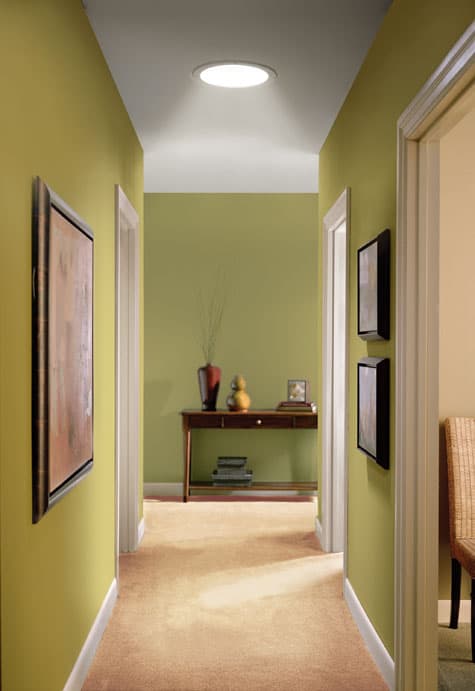
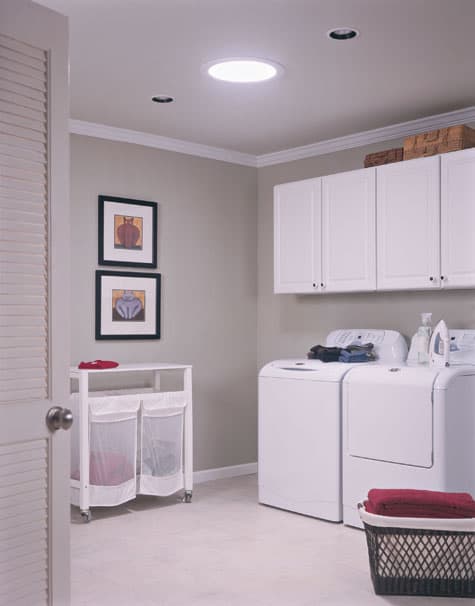
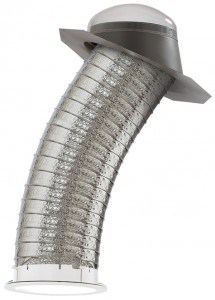
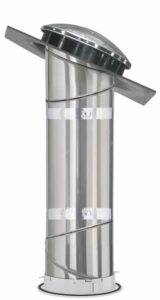
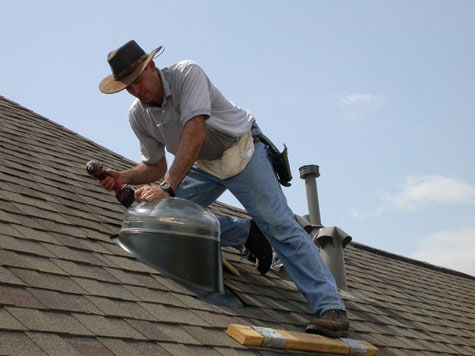
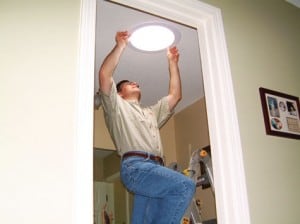


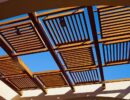

 Don Vandervort writes or edits every article at HomeTips. Don has:
Don Vandervort writes or edits every article at HomeTips. Don has:
